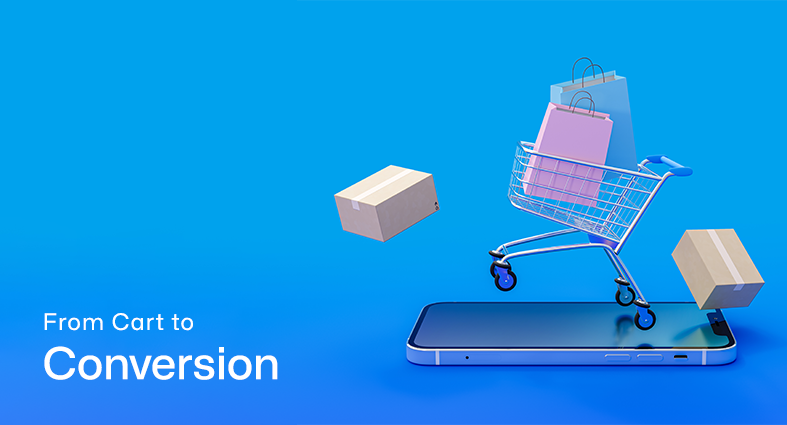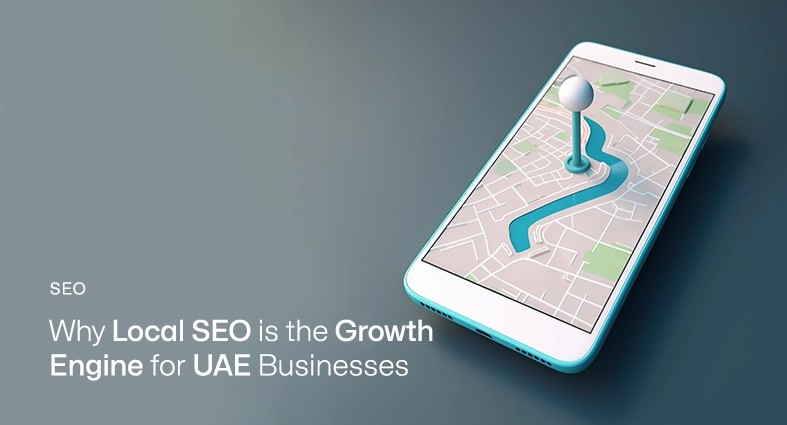The world of online business is constantly evolving, and to stay ahead of the competition, it is essential to have a strong and effective ecommerce presence. In this comprehensive guide, we will delve into the intricacies of ecommerce development and provide you with the ultimate roadmap to elevate your online business. From understanding the key elements of ecommerce development to planning a winning strategy, designing a user-friendly website, integrating secure payment gateways, implementing effective marketing tactics, and optimizing for search engines, we will cover it all. Whether you are just starting your online venture or looking to revamp your existing ecommerce platform, this guide will equip you with the knowledge and insights needed to drive growth, boost conversions, and achieve online success. Get ready to unlock the full potential of ecommerce development and take your online business to new heights.
Importance of Ecommerce Development for Online Businesses
The importance of ecommerce development cannot be overstated. It provides businesses with a powerful platform to reach a global audience, expand their customer base, and increase sales. Here are a few key reasons why ecommerce development is vital for online businesses:
- Global Reach: Unlike traditional brick-and-mortar stores, ecommerce websites break down geographical barriers. With an online store, you can reach customers from all corners of the world, expanding your market reach exponentially.
- Cost-Effectiveness: Compared to physical retail stores, ecommerce development offers significant cost savings. You eliminate expenses related to renting or owning a physical space, hiring sales staff, and other overhead costs. This cost-effectiveness translates to higher profit margins.
- Enhanced Customer Experience: Ecommerce websites allow for seamless and personalized customer experiences. With features such as product recommendations, personalized offers, and easy checkout processes, you can create a tailored shopping journey that delights your customers and keeps them coming back.
- Data-Driven Insights: Ecommerce platforms provide valuable insights into customer behavior, purchase patterns, and preferences. By analyzing this data, you can make informed business decisions, optimize marketing strategies, and refine your product offerings.
Benefits of a Well-Developed Ecommerce Website
A well-developed ecommerce website offers numerous benefits that contribute to the success of your online business. Here are some key advantages:
- Professional Brand Image: An aesthetically appealing and user-friendly website design instills trust and confidence in your brand. A well-developed ecommerce site showcases professionalism and reliability, enhancing your brand image and attracting more customers.
- Improved User Experience: A seamless and intuitive user experience is crucial for converting visitors into customers. By optimizing navigation, product search, and checkout processes, you can provide a smooth and hassle-free shopping experience, leading to higher conversion rates and customer satisfaction.
- Mobile-Friendly Design: With the increasing use of smartphones, having a mobile-friendly ecommerce website is essential. A well-developed site ensures responsiveness across various devices and screen sizes, enabling customers to shop conveniently from their mobile devices.
- Secure Payment Processing: Security is paramount in ecommerce. A well-developed website integrates secure payment gateways and implements SSL certificates to safeguard customer data and provide a secure transaction environment. This instills confidence in your customers and helps build trust in your brand.
- Scalability and Flexibility: As your business grows, your ecommerce website needs to scale accordingly. A well-developed platform allows for easy scalability, accommodating increased traffic, product range, and customer demands. It also allows for flexibility in adapting to market trends and implementing new features.
- Integration Capabilities: A robust ecommerce platform provides seamless integration with third-party tools and services. This allows you to leverage marketing automation, inventory management systems, customer relationship management (CRM) tools, and other functionalities to streamline your operations and enhance efficiency.
Planning Your Ecommerce Development Project
When embarking on an ecommerce development project, careful planning is essential for success. This phase involves defining your business goals and objectives, understanding your target audience through market research, and selecting the most suitable ecommerce platform. Defining your business goals and objectives helps set a clear direction and allows you to measure the success of your ecommerce website. Understanding your target audience enables you to tailor your website’s design and functionalities to meet their needs and preferences. Thorough market research helps identify trends, analyze competitors, and find unique selling points for your online store. Choosing the right ecommerce platform is crucial, considering factors like scalability, customization options, and integrations with third-party services. Effective planning sets the foundation for a well-executed ecommerce development project, leading to a successful online business venture. Let’s dive into more details:
Defining Goals and Objectives
Before diving into the development process, it’s essential to clearly define your goals and objectives for your ecommerce website. This involves identifying the purpose of your website, whether it’s to drive sales, increase brand visibility, or enhance customer engagement. By establishing specific and measurable goals, you can align your development efforts to achieve the desired outcomes.
Understanding Target Audience and Market Research
To create an ecommerce website that resonates with your target audience, it’s crucial to understand their preferences, behaviors, and needs. Conducting thorough market research helps you gain insights into consumer trends, competitor analysis, and industry benchmarks. This information allows you to tailor your website’s design, product offerings, and marketing strategies to appeal to your target audience effectively.
Choosing the Right Ecommerce Platform
Selecting the right ecommerce platform is a critical decision that impacts the functionality, scalability, and customization options of your online store. There are various ecommerce platforms available, each with its strengths and limitations. Consider factors such as ease of use, scalability, available features, integration capabilities, and security when evaluating platforms. It’s essential to choose a platform that aligns with your business requirements and can accommodate future growth.
Budgeting and Timeline Considerations
Developing an ecommerce website involves financial investments and time commitments. It’s important to establish a realistic budget that takes into account expenses such as development costs, hosting, domain registration, security measures, and ongoing maintenance. Additionally, setting a timeline for your project helps ensure that tasks are completed efficiently and milestones are achieved within the desired timeframe.
Designing Your Ecommerce Website
Designing an ecommerce website that is visually appealing, user-friendly, and aligned with your brand identity is essential for driving conversions and creating a positive user experience. When it comes to designing your ecommerce website, there are several crucial factors to consider. First and foremost, prioritize user-centric design principles to create an intuitive and engaging browsing experience. Implement clear navigation, well-organized product categorization, and effective search functionality to help users find what they’re looking for easily. Additionally, responsive web design is essential for optimizing your website across different devices, ensuring that mobile users have a seamless shopping experience. Compelling product presentations are vital to capturing the attention of potential customers. Showcase products with high-quality images, detailed descriptions, and customer reviews to build trust and encourage conversions. Furthermore, consider implementing product filtering and sorting options to facilitate easy browsing and quick decision-making. The design of your ecommerce website plays a significant role in attracting and retaining customers, so invest time and effort in creating an appealing and user-friendly interface that aligns with your brand identity.
User experience (UX) best practices
When it comes to ecommerce, providing a seamless and enjoyable user experience is paramount. UX best practices focus on understanding your target audience, their preferences, and behaviors to create a website that meets their needs. This includes factors such as intuitive navigation, clear product categorization, and effective search functionality. By designing an intuitive and user-centric interface, you can enhance engagement, reduce bounce rates, and increase conversions.
Responsive design and mobile optimization
With the rise of mobile browsing, it is crucial to ensure that your ecommerce website is fully responsive and optimized for mobile devices. Mobile optimization involves optimizing page load times, simplifying navigation, and designing mobile-friendly layouts to accommodate the preferences and limitations of mobile users. By prioritizing mobile optimization, you can reach a wider audience and maximize conversions.
Effective navigation and site structure
Clear and intuitive navigation is crucial for guiding users through your ecommerce website and helping them find the products or information they are looking for. A well-structured site hierarchy, with logical categories and subcategories, makes it easy for users to navigate and discover products. Implementing features such as breadcrumbs and search bars further, enhance the usability of your website. Additionally, strategically placing call-to-action buttons and product filters can help users refine their search and find relevant products more efficiently.
Visual branding and Aesthetics
Visual branding plays a significant role in establishing a strong and memorable identity for your ecommerce business. Consistency in design elements, such as colors, typography, and imagery, helps build brand recognition and trust among your target audience. Creating visually appealing product images and high-quality visual content can significantly impact user engagement and product perception. By investing in professional photography, graphic design, and visual branding, you can enhance the overall aesthetics of your ecommerce website and create a visually appealing shopping experience that aligns with your brand image.
Developing Ecommerce Features and Functionality
To create a successful ecommerce website, it is essential to develop robust features and functionalities that enhance the user experience and streamline the buying process. Key aspects of developing ecommerce features and functionality include product management, shopping cart functionality, order processing, and customer account management. With effective product management, you can easily showcase your products, organize them into categories, and provide detailed descriptions and specifications. Implementing a user-friendly shopping cart ensures a smooth and hassle-free checkout experience, allowing customers to add items, view their cart, and proceed to payment effortlessly. Seamless order processing involves integrating payment gateways, automating order confirmation and tracking, and generating invoices. Additionally, customer account management features enable users to create accounts, store their information, track their orders, and access personalized recommendations. By focusing on developing these essential ecommerce features, you can provide a seamless and convenient shopping experience that encourages customer loyalty and drives business growth.
Product Catalog Management
Efficient management of your product catalog is crucial for presenting your offerings effectively and helping customers find what they need. This involves creating a well-structured product hierarchy, organizing products into relevant categories and subcategories, and implementing search filters to facilitate easy navigation. Additionally, incorporating features like product variations (e.g., size, color), detailed descriptions, high-quality images, and customer reviews enhances the overall shopping experience and encourages conversion.
Shopping Cart and Checkout Process
The shopping cart and checkout process are critical stages where customers complete their purchases. It is essential to develop a user-friendly shopping cart that allows customers to add and remove products easily, view their cart contents, and calculate the total cost, including taxes and shipping fees. Streamlining the checkout process by minimizing steps, offering guest checkout options, and providing secure payment methods helps reduce cart abandonment and improve conversion rates.
Payment Gateway Integration
A secure and seamless payment process is vital for building trust and ensuring customer satisfaction. Integrating reliable and trusted payment gateways enables customers to make payments securely and conveniently. Popular payment gateways like PayPal, Stripe, and Authorize.Net offer various payment options, such as credit cards, digital wallets, and bank transfers. It is crucial to choose payment gateways that align with your target audience’s preferences and support the currencies and regions you operate in.
Order Management and Fulfillment
Efficient order management and fulfillment systems are key to ensuring a smooth post-purchase experience. Developing a backend system that tracks and manages orders, updates inventory in real time, and generates order notifications for both customers and administrators is essential. Integration with shipping carriers or third-party logistics providers can help automate shipping label generation, tracking, and delivery status updates. By providing accurate and timely order information, you can build trust and deliver a positive customer experience.
Optimizing Your Ecommerce Website for Search Engines
To drive organic traffic and increase visibility, it is crucial to optimize your ecommerce website for search engines. Search engine optimization (SEO) plays a vital role in improving your website’s rankings on search engine result pages. Start by conducting thorough keyword research to identify the relevant terms and phrases that your target audience is searching for. Incorporate these keywords strategically in your product descriptions, titles, URLs, and meta tags to enhance your website’s relevancy. Additionally, optimize your website’s structure and navigation to ensure easy crawling for search engine bots. Focus on creating unique and valuable content, including blog posts, guides, and FAQs, that targets both user intent and relevant keywords. Implementing proper schema markup can also enhance your website’s visibility in search results. Regularly monitor and analyze your website’s performance using SEO tools, and make necessary adjustments to improve your rankings and attract more organic traffic to your ecommerce store.
Keyword Research and On-Page Optimization
By conducting thorough keyword research, you can uncover valuable insights and discover high-ranking keywords with a good balance of search volume and competition. Once you have identified your target keywords, it’s important to optimize your website’s pages accordingly. This involves incorporating the keywords strategically in page titles, meta descriptions, headings, and throughout the content. However, it’s crucial to maintain a natural and user-friendly approach while optimizing for keywords to ensure a positive user experience.
Technical SEO Considerations
Technical SEO plays a vital role in improving your website’s performance and accessibility to search engines. Here are some key technical aspects to consider for ecommerce websites:
- Site Speed: A fast-loading website is essential for both user experience and search engine rankings.
- Mobile-Friendliness: With the majority of online searches happening on mobile devices, it’s imperative to have a responsive design that adapts seamlessly to different screen sizes. Google considers mobile-friendliness as a ranking factor, so make sure your website is optimized for mobile users.
- URL Structure: Create descriptive and user-friendly URLs that incorporate relevant keywords.
- XML Sitemap: Generate and submit an XML sitemap to search engines to ensure that all your website pages are discovered and indexed.
Link Building and Backlink Strategies
Link building is an essential aspect of SEO that involves acquiring high-quality backlinks from authoritative websites. Backlinks act as votes of confidence from other websites, signaling to search engines that your website is reputable and relevant.
- Content Marketing: Create valuable and shareable content that naturally attracts backlinks from other websites. This can include blog posts, infographics, guides, and videos that offer valuable information or entertainment to your target audience.
- Influencer Partnerships: Collaborate with influencers or industry experts in your niche to create content or promote your products.
- Guest Blogging: Contribute guest posts to authoritative websites in your industry, including relevant links back to your website. This not only helps in building backlinks but also establishes you as an expert in your field.
Monitoring and Tracking SEO Performance
It’s essential to monitor and track the performance of your SEO efforts to identify areas for improvement and measure the impact of your strategies.
- Organic Traffic: Track the volume of organic traffic coming to your website and analyze trends over time.
- Keyword Rankings: Keep an eye on your website’s ranking positions for target keywords. Identify any fluctuations and optimize your content accordingly.
- Conversion Rate: Monitor the conversion rate of organic traffic to track the effectiveness of your SEO efforts in driving sales or other desired actions.
- Backlink Profile: Regularly audit your backlink profile to ensure the quality and relevance of your incoming links. Disavow any toxic or spammy links that may negatively impact your website’s reputation.
Enhancing Ecommerce Security and Customer Trust
Ensuring robust security measures within your ecommerce platform is paramount to protecting sensitive customer data and building trust. By implementing industry-standard security protocols, you can safeguard transactions, prevent data breaches, and foster a secure environment for online shopping. Key aspects of enhancing ecommerce security include implementing SSL certificates to encrypt communication between the website and users, adhering to PCI DSS compliance guidelines to secure payment transactions, and regularly monitoring for potential vulnerabilities or suspicious activities. Additionally, providing clear privacy policies and terms of service instills transparency and instills confidence in customers. By prioritizing security and demonstrating a commitment to customer trust, you can establish a strong reputation and encourage repeat business, ultimately driving the success of your ecommerce venture.
SSL Certificates and Secure Transactions
One of the foundational elements of ecommerce security is implementing SSL (Secure Sockets Layer) certificates. SSL certificates encrypt the data transmitted between the user’s browser and the website, preventing unauthorized access to sensitive information. This encryption creates a secure connection, instilling confidence in customers that their details, such as credit card numbers and addresses, are protected. Displaying trust indicators such as the padlock icon and “https” in the website’s URL also reassures visitors that the site is secure.
PCI Compliance and Data Protection
Payment Card Industry Data Security Standard (PCI DSS) compliance is crucial for ecommerce websites that process credit card payments. Adhering to PCI compliance ensures that you have the necessary security measures in place to protect customer payment card data. This includes implementing firewalls, regular security audits, and secure storage of cardholder data. By complying with PCI standards, you demonstrate your commitment to safeguarding customer information and maintaining industry best practices.
Building Trust Signals and Customer Reviews
Trust signals play a significant role in establishing credibility and instilling confidence in potential customers. Display trust badges, security seals, and certifications prominently on your website to assure visitors that their transactions are secure. Highlight any industry affiliations, awards, or partnerships to further build trust. Additionally, integrating customer reviews and ratings can enhance trust and provide social proof of your products or services. Encourage satisfied customers to leave reviews and testimonials, showcasing positive experiences and building trust among prospective buyers.
Establishing a Strong Customer Support System
Exceptional customer support is a crucial aspect of ecommerce success. Providing multiple channels for customers to reach out, such as email, live chat, or phone support, demonstrates your commitment to resolving any issues promptly. Ensure that your support team is well-trained and knowledgeable about your products or services. Clear communication and responsiveness can go a long way in building customer trust and satisfaction. Additionally, having a comprehensive FAQ section or self-service resources can empower customers to find solutions independently, improving their overall experience.
Ecommerce Marketing and Promotion
Ecommerce marketing and promotion play a vital role in driving traffic, increasing conversions, and maximizing the success of your online business. With the immense competition in the digital landscape, it is crucial to employ effective marketing strategies to stand out from the crowd and attract potential customers. Search engine optimization (SEO) is a key aspect of ecommerce marketing, as it focuses on optimizing your website and product pages to rank higher in search engine results. By conducting thorough keyword research, optimizing metadata, and creating high-quality content, you can improve your website’s visibility and organic traffic. Additionally, leveraging social media platforms, email marketing campaigns, and influencer collaborations can help you reach a wider audience and engage with potential customers. Paid advertising and remarketing techniques can further enhance your marketing efforts by targeting specific audiences and re-engaging visitors who have shown interest in your products. It is essential to continually analyze and measure the effectiveness of your marketing strategies, making adjustments and optimizations to ensure maximum ROI. By implementing a comprehensive ecommerce marketing and promotion plan, you can drive the success and growth of your online business.
Social Media Marketing Strategies
Social media platforms have become powerful marketing channels for ecommerce businesses. Develop a social media marketing strategy that includes creating compelling content, running targeted ads, and fostering community engagement. Utilize features like shoppable posts and social media analytics to optimize your campaigns and measure their effectiveness.
Email Marketing Campaigns
Email marketing remains one of the most effective channels for driving conversions in ecommerce. Build an email list by offering incentives, such as exclusive discounts or valuable content, and nurture your subscribers with personalized and relevant emails. Segment your audience based on their preferences, past purchases, and browsing behavior to deliver tailored messages. Incorporate strategies like cart abandonment emails, product recommendations, and customer feedback requests to maximize the impact of your email campaigns.
Content Marketing Techniques
Content marketing plays a vital role in establishing your ecommerce brand as an authority in your industry. Create valuable and informative content that educates and entertains your target audience. This can include blog posts, product guides, video tutorials, and infographics. Optimize your content for search engines by conducting keyword research and utilizing SEO best practices. Sharing valuable content not only helps drive organic traffic to your website but also builds trust and loyalty among your customers.
Influencer Partnerships and Affiliate Programs
Collaborating with influencers in your niche can significantly expand your reach and drive sales. Partner with them to promote your products or services through sponsored posts, reviews, or affiliate programs. Influencers can help increase brand awareness, generate user-generated content, and encourage their followers to make purchases. Implement an affiliate program where affiliates earn a commission for referring customers to your website. This incentivizes affiliates to actively promote your products, thereby expanding your customer base.
Data-Driven Success: Harnessing Analytics for Ecommerce Growth
Harnessing analytics is essential for achieving growth in the ecommerce industry. This section of the guide explores the power of data and how it can be leveraged to drive success in your online business. By implementing robust analytics tools and strategies, you can gain valuable insights into customer behavior, preferences, and trends. These insights can be used to optimize various aspects of your ecommerce operations, including product offerings, pricing strategies, marketing campaigns, and user experience. With the right analytics in place, you can make data-backed decisions, identify areas for improvement, and fine-tune your ecommerce strategy for maximum growth and profitability. From tracking key performance indicators (KPIs) to conducting A/B testing and conversion rate optimization, this section will delve into the practical applications of analytics and provide actionable tips to help you harness the power of data for ecommerce success.
Setting up ecommerce analytics
Setting up ecommerce analytics is the first step towards understanding and leveraging data for your online business. Start by integrating a robust analytics platform, such as Google Analytics, into your ecommerce website. This will allow you to gather valuable data on website traffic, user engagement, conversion rates, and more. Set up goals and conversion tracking to measure the effectiveness of your marketing campaigns and track important actions, such as completed purchases or newsletter sign-ups.
Tracking key performance indicators (KPIs)
Tracking key performance indicators (KPIs) is crucial for monitoring the health and progress of your ecommerce business. Identify the KPIs that align with your business objectives, such as sales revenue, conversion rate, average order value, and customer acquisition cost. Regularly monitor these metrics to identify areas of improvement and track the impact of your marketing and sales strategies.
Analyzing customer behavior and trends
Analyzing customer behavior and trends is a goldmine of insights that can drive your ecommerce growth. Dive into your analytics data to understand how customers navigate your website, which products they view or add to their cart, and where they drop off in the conversion funnel. Utilize segmentation to group customers based on demographics, purchasing behavior, or engagement level. By understanding your customers’ preferences and pain points, you can tailor your marketing efforts, product offerings, and website experience to better meet their needs.
Making data-driven decisions for growth
Making data-driven decisions is the ultimate goal of ecommerce analytics. With a wealth of data at your fingertips, you can optimize your website, marketing campaigns, and product offerings to maximize conversions and revenue. Identify trends and patterns in your data to uncover opportunities for improvement. Test and iterate different strategies, such as pricing experiments, personalized recommendations, or targeted email campaigns, based on data insights. Continuously measure and analyze the results to refine your approach and drive sustainable growth.
The Art of Conversion: Optimizing Your Ecommerce Website for Higher Sales
Driving traffic to your ecommerce website is just the first step. To truly succeed in the online marketplace, you need to focus on converting those visitors into paying customers. In this section, we will explore various strategies for optimizing your ecommerce website to maximize sales and increase conversion rates.
Conversion Rate Optimization Strategies
Conversion rate optimization (CRO) involves implementing tactics and techniques to enhance the percentage of website visitors who take desired actions, such as making a purchase. By fine-tuning your website elements and user experience, you can encourage more visitors to complete their transactions. Some effective CRO strategies include:
- Effective Product Descriptions and Visuals: Compelling and informative product descriptions are crucial for engaging potential customers. Use persuasive language to highlight the unique selling points of your products, and include high-quality images or videos that showcase the product from different angles. Detailed product specifications, customer reviews, and ratings can also instill confidence in your customers and drive conversions.
- Streamlining the Checkout Process: A complicated or lengthy checkout process can be a major conversion killer. Simplify your checkout flow by minimizing the number of steps required, offering guest checkout options, and pre-filling form fields whenever possible. Additionally, provide clear and transparent information about shipping costs, delivery times, and available payment options to avoid any surprises that might lead to cart abandonment.
- Using Upselling and Cross-selling Techniques: Upselling involves encouraging customers to purchase a higher-priced item or upgrade their existing selection, while cross-selling involves recommending complementary or related products. By strategically placing upsell and cross-sell suggestions during the customer journey, you can increase the average order value and boost overall sales.
Effective Product Descriptions and Visuals
When it comes to online shopping, customers heavily rely on the information provided about products. To optimize your ecommerce website for conversions, pay close attention to your product descriptions and visuals.
- Be Descriptive and Persuasive: Communicate the features, benefits, and unique selling points of your products. Use descriptive language to help customers envision owning and using the product.
- Use High-Quality Images and Videos: Visuals play a crucial role in capturing customers’ attention and showcasing your products. Invest in professional product photography or create engaging videos that demonstrate the product in action. Ensure that the visuals accurately represent the product’s appearance and quality.
- Include Customer Reviews and Ratings: Genuine customer reviews and ratings can significantly impact purchasing decisions. Displaying reviews and ratings on your product pages helps build trust and credibility. Encourage customers to leave feedback and respond promptly to any concerns or inquiries.
Streamlining the Checkout Process
A smooth and streamlined checkout process is vital for reducing cart abandonment and improving conversions. Consider the following tips to optimize your checkout process:
- Simplify Form Fields: Minimize the number of required form fields by only asking for essential information. Offer autofill suggestions and use dropdown menus or checkboxes where appropriate to make data entry quicker and easier for customers.
- Provide Guest Checkout Option: Many customers prefer to purchase without creating an account. Offering a guest checkout option eliminates the need for account registration, simplifies the process, and reduces friction.
- Display Progress Indicators: Indicate the steps involved in the checkout process, such as “Shipping,” “Payment,” and “Review Order.” Progress indicators help customers understand how far along they are and reduce the feeling of being overwhelmed.
- Offer Multiple Payment Options: Provide a variety of payment methods to accommodate different customer preferences. Include popular options like credit/debit cards, digital wallets, and alternative payment methods such as PayPal or Apple Pay. Make sure your chosen payment gateway is secure and reliable.
Using Upselling and Cross-selling Techniques
Upselling and cross-selling techniques are effective strategies for increasing the average order value and maximizing sales. Here’s how you can leverage these techniques to drive conversions:
- Product Recommendations: Display personalized product recommendations based on the customer’s browsing and purchase history. This can be done through a “Customers who bought this also bought” section or by suggesting related products on the product page. By showcasing relevant items, you can encourage customers to explore additional options and make additional purchases.
- Bundling and Packages: Create bundled offers that combine related products or offer additional value. For example, if a customer is purchasing a camera, you can offer a bundle that includes a lens, memory card, and carrying case at a discounted price. Bundling encourages customers to spend more by providing them with a cost-effective and convenient solution.
- Limited-time Offers and Discounts: Implement scarcity tactics by showcasing limited-time offers, flash sales, or discounts. Highlighting time-limited deals creates a sense of urgency and prompts customers to purchase before the offer expires. Use eye-catching banners or pop-ups to grab attention and drive conversions.
- Product Upsells: During the purchasing process, recommend higher-priced alternatives or upgraded versions of the products customers are considering. For example, if a customer is viewing a smartphone, suggest a premium model with additional features or storage capacity. Upselling helps customers make informed decisions and may persuade them to invest in a better product.
- Cross-selling at Checkout: When customers are in the checkout phase, suggest complementary products that enhance their purchase. For instance, if a customer is buying a dress, you can recommend matching accessories or shoes. Cross-selling encourages customers to explore related products, increasing the likelihood of adding more items to their cart.
Sustaining Success: Best Practices for Ecommerce Maintenance and Updates
To ensure the long-term success of your ecommerce website, it’s essential to prioritize regular maintenance and updates. Ecommerce maintenance involves monitoring and optimizing various aspects of your site to enhance performance, security, and user experience. This includes tasks such as monitoring website uptime, performing regular backups, updating software and plugins, and conducting security audits. Additionally, staying up-to-date with the latest industry trends and technology advancements is crucial for keeping your ecommerce site competitive. By implementing best practices for ecommerce maintenance, you can proactively address any issues, improve functionality, and provide a seamless online shopping experience for your customers. Regular updates and enhancements will not only protect your website from vulnerabilities but also allow you to adapt to changing customer expectations and market demands, ultimately sustaining the success of your ecommerce business.
Regular Website Backups and Security Updates
Regular website backups are essential to protect your ecommerce business from unforeseen events such as data loss, server failures, or security breaches. By creating backups of your website and its database, you can quickly restore your site to a previous state in case of any issues. Additionally, staying up to date with security updates and patches is crucial to protect your website from potential vulnerabilities and hacking attempts. Regularly installing security updates and patches provided by your ecommerce platform or hosting provider can help ensure that your website is secure and protected.
Monitoring Website Performance and Uptime
Website performance and uptime play a significant role in delivering a seamless user experience. Slow-loading pages or frequent downtime can frustrate visitors and lead to lost sales opportunities. Regularly monitoring your website’s performance and uptime helps you identify any issues or bottlenecks that may be affecting your site’s speed and availability. Tools like Google Analytics, Pingdom, or GTmetrix can provide insights into your website’s performance metrics, including page load times, server response times, and overall website speed. By monitoring these metrics and taking appropriate actions, such as optimizing images, caching, or upgrading server resources, you can improve your website’s performance and ensure maximum uptime.
Handling Software and Plugin Updates
Ecommerce platforms and content management systems (CMS) often release software updates and new versions to improve functionality, fix bugs, and enhance security. Similarly, plugins and extensions used on your ecommerce website also require regular updates to ensure compatibility and security. It is crucial to stay on top of these updates and install them on time. However, before updating any software or plugins, it is recommended to create a backup of your website to avoid any potential conflicts or issues. Additionally, carefully review the update notes and check for compatibility with your existing theme and plugins. Regularly updating your website’s software and plugins help ensure that you have access to the latest features, bug fixes, and security enhancements.
Implementing Customer Feedback and Continuous Improvement
Customer feedback is invaluable for improving your ecommerce website and enhancing the overall shopping experience. Actively seek feedback from your customers through surveys, reviews, or direct communication channels. Analyze this feedback to identify areas for improvement, such as website navigation, checkout process, product information, or customer support. Implementing these improvements based on customer feedback not only enhances the user experience but also boosts customer satisfaction and increases the likelihood of repeat purchases. Additionally, continuously monitoring industry trends and staying updated with emerging technologies can help you identify opportunities for innovation and stay ahead of the competition.
Conclusion
Ecommerce development plays a pivotal role in elevating your online business to new heights. By understanding the intricacies of ecommerce development and implementing the strategies outlined in this guide, you can create a compelling and user-friendly ecommerce website that attracts customers, drives sales, and enhances your brand’s reputation. From selecting the right ecommerce platform and designing an intuitive interface to integrating secure payment gateways and implementing effective SEO and marketing strategies, each step is crucial in ensuring the success of your online business. By continuously testing, optimizing, and staying up-to-date with industry trends, you can stay ahead of the competition and maximize your ecommerce potential. So, embrace the power of ecommerce development and unlock the opportunities it offers for your online business success. Contact us now and let our experienced team of ecommerce developers in Abu Dhabi help you build a robust and profitable ecommerce website. Together, we’ll take your online business to the next level!
services
Feel free to send us a message.
Please, share your thoughts, and let's chat over a cup of tea.



















